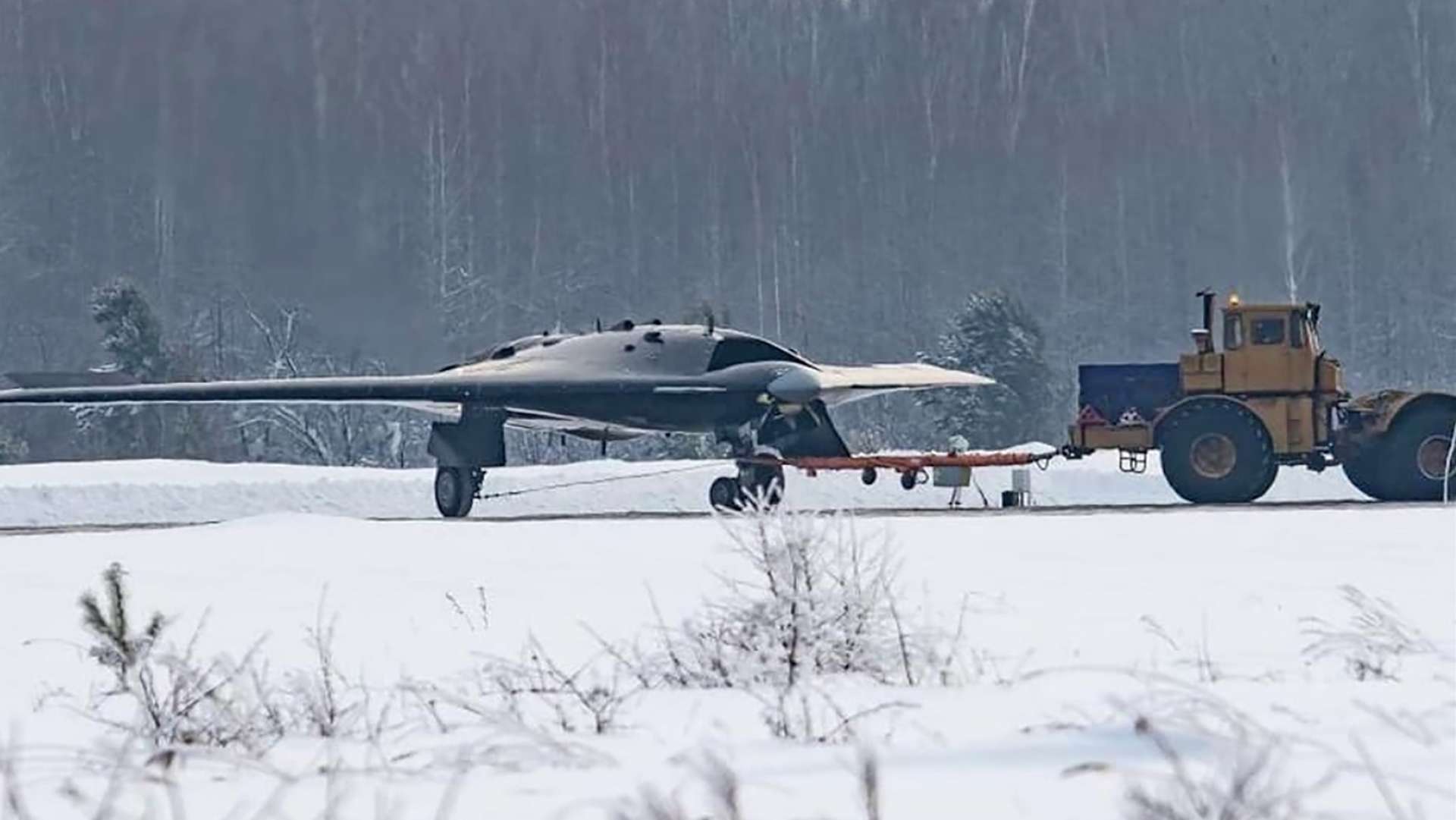The New “Hunter” UCAV Might Work in Tandem with Su-57 Fighter.
New photos have surfaced on social media of the rumored Russian next-generation unmanned combat air vehicle (UCAV) tentatively called the “охотник” or “Hunter”, at the Novosibirsk Aircraft Production Organization (NAPO) in central Russia. The photos provide new clues about the status of Russia’s previously modest RPA (Remotely Piloted Aircraft) capability.
The same week the photos of the new “Hunter” drone appeared across Russian Twitter and Facebook accounts, photos of a Sukhoi Su-57 with unique camouflage plan view markings and new tail insignia also surfaced. The markings on the tail of the Su-57 (053 Blue) show the plan view shape of what appears to be the Hunter drone, along with an Su-57 next to it. The two shapes float above a lightning bolt silhouette in the background, suggesting some electronic relationship between the two aircraft.
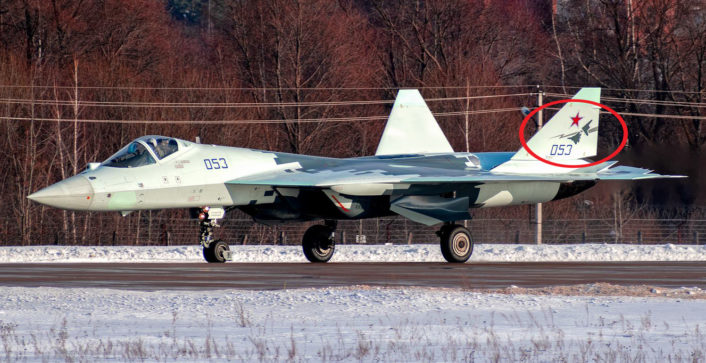
The new pixelated camouflage on the underside of the aircraft mimics the plan view shape of the Hunter remotely piloted aircraft.
Look who’s hiding in a Su-57 https://t.co/uzoHTzn4GC
— David Cenciotti (@cencio4) January 23, 2019
Speculation has surfaced that the Su-57 may be developing some capability to control or share data with this new remotely piloted aircraft. This concept may be similar to an idea proposed by the U.S. Air Force with the F-35A Lightning II. A future concept video released by the Air Force Research Lab on March 22, 2018, shows an animation of an F-35A flying with six unmanned aircraft. The concept is that the unmanned aircraft themselves manage their own basic flight control while the F-35A acts as a command and control hub to assign targets and select weapons for the unmanned aircraft to employ.
The idea is particularly relevant in a “first day of war” scenario when an F-35A could fly along the forward line of battle just outside the range of enemy air defenses and then vector the remotely piloted aircraft in toward heavily defended targets such as command and control networks and air defense sensors. These remotely piloted aircraft could then release stand-off weapons to destroy enemy command and control and air defense assets.
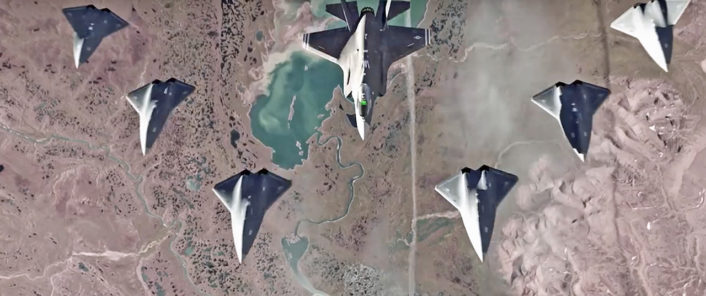
The photos of the new Russian Hunter UCAV also suggest a consensus of remotely piloted low observable aircraft design with nearly every other similar concept in several countries including the U.S. and China. The plan views of each of these country’s advanced, low-observable remotely piloted aircraft are similar.
Some distinctive details of the Russian Hunter include its rather large size and sturdy-looking landing gear as well as the not-so-stealthy engine section (with what seem similar to a Saturn AL-41 engine used in the Su-57). The Russian’s have a long-standing penchant for designing landing carriages that can operate from improvised airfields with heavy loads. This sturdy landing gear also suggests the Hunter UCAV may have a significant payload capability for weapons and/or sensors.
The new Russian Hunter RPA photos also show a consensus resemblance to the Northrop Grumman X-47B and China’s so-called AVIC 601-S “Sharp Sword” drone, seen in several versions since 2013. Both the Russian and Chinese jet-powered, flying wing RPA’s use about the same wing sweep angle and single jet engine with a top-mounted intake and conventional round exhaust. This round exhaust is noteworthy since it does almost nothing to mask the infra-red signature and radar reflection of the rear aspect of the aircraft. Although this may be changed at a later stage (let’s not forget this is a developmental aircraft), this may suggest the new Russian Hunter is predominantly designed for forward-aspect stealth as opposed to all-aspect stealth like the U.S. B-2 Spirit stealth bomber with its unusual louvered exhaust designed to reduce infra-red and radar signature.

Based on the new Russian social media photos of the Hunter, the aircraft has not left the ground yet. It is shown in the photos being towed around an area with trees very close to the tarmac by a piece of heavy construction equipment, not a dedicated aircraft tug as seen at airfields. This may suggest the photos were taken at a manufacturing facility prior to shipment of the aircraft to flight test facility.
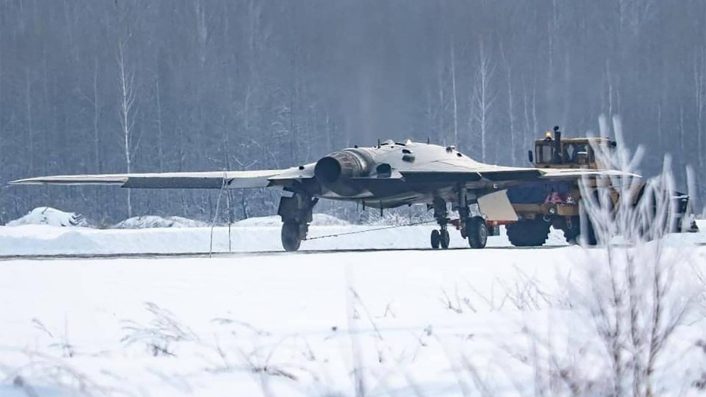
According to Air Forces Monthly, the Okhotnik is one of three large unmanned aerial vehicles currently being developed in Russia: “the Okhotnik combat system is the largest, weighing more than 15 tonnes. The other two UAVs are the one-tonne Inokhodets (considered a counterpart to the US Predator), and the five-tonne Altius-M (broadly analogous to the MQ-9 Reaper).”
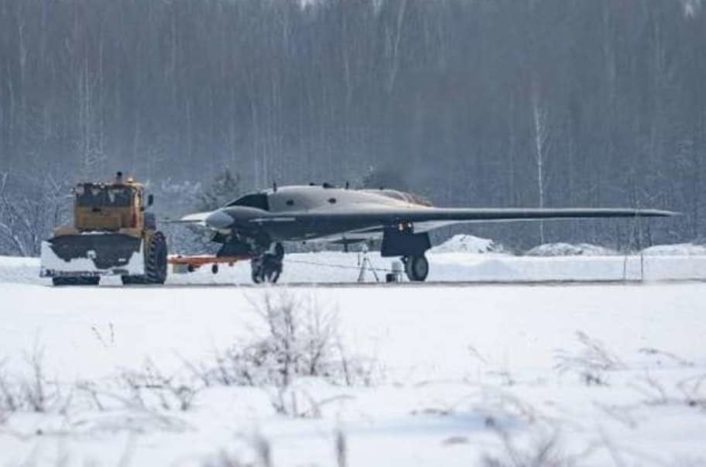
Whatever the role of the new Russian Hunter UCAV is and its relationship, if any, to the Su-57 program is there is no doubt its debut will continue to be an interesting story as Russia appears to be bringing its remotely piloted aircraft development up to speed relative to competing nations.

